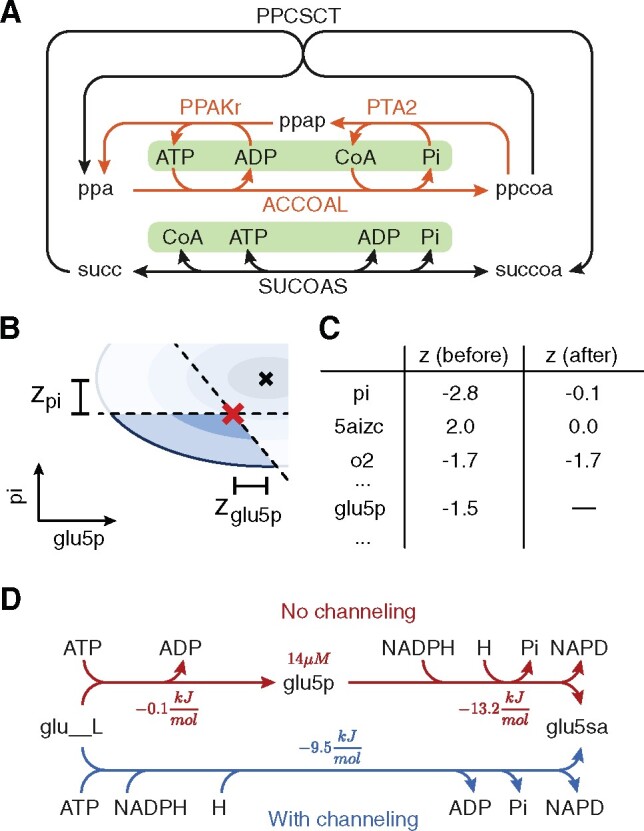Fig. 3.

Thermodynamic assessment of iML1515-CAN. (A) Forced internal cycle in propionate metabolism (orange). The irreversibility of ACCOAL conflicts with the direction of phosphate acetyltransferase (PTA2) and propionate kinase (PPAKr). Moreover, due to the direction of PPCSCT and a shared pool of cofactors (green), it also incorrectly implies that conversion of succinyl-CoA to succinate in the TCA by succinyl-CoA synthetase (SUCOAS) is unfavorable. (B) After using PMO to find (red cross), we compute the z-scores of each metabolite and metabolites, i.e. the normalized distance from the mean (black cross). (C) Metabolites with high z-score (‘before’) are selected. After literature search, 29 out of the 36 flagged by the analysis led to improvements in the model, as shown by smaller z-scores in the curated model (‘after’). (D) A symptomatic case suggesting substrate channeling. An unfavorable reaction produces an intermediate (glutamate-5-phosphate) that must have low concentration to maintain thermodynamic feasibility and is followed by a favorable reaction. The total reaction energies with and without channeling are not identical because the estimated concentrations differ
